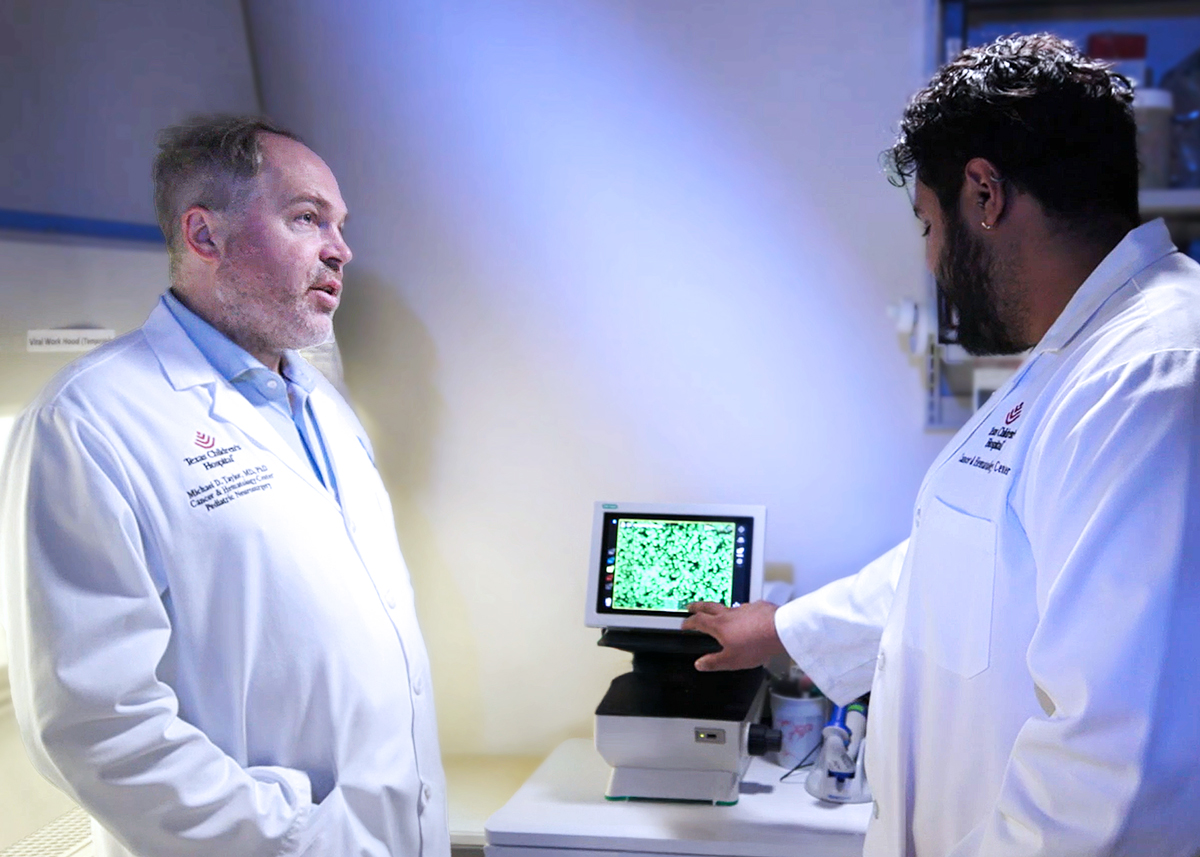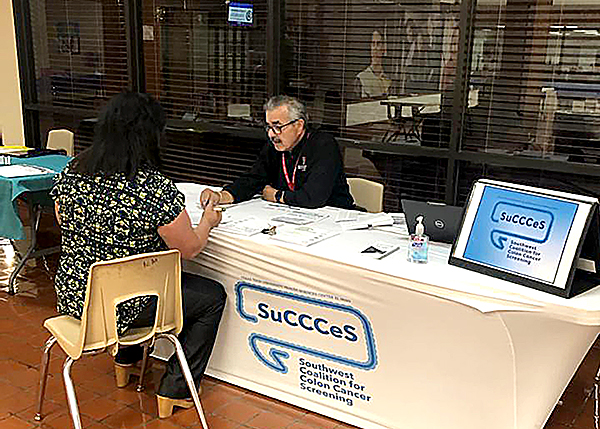Planning and Priorities
Accelerating innovation in cancer research and prevention requires comprehensive planning for current operations and well as longer-term goals. With a solid foundation of research innovation and prevention services built through 15 years of steady investment, CPRIT has positioned the state for new life science opportunities.
The CPRIT Oversight Committee and staff use strategic and operational planning to identify near term and future opportunities to create and expedite innovation in cancer research and breakthroughs in cancer prevention. This sets the course for CPRIT’s activities year by year and for the future.
The four components of CPRIT’s long-term vision for the agency and each of its three programs serve as our guide.
Decrease cancer in Texas
through prevention and translation of discoveries into treatments and cures
Focus on disparities
in cancer incidence, mortality, and access to care
Accelerate advancements
in the scientific understanding of cancer
Enhance life sciences infrastructure
in the state
The Oversight Committee adopted its fiscal year 2024 priorities for CPRIT’s academic research, product development research, and prevention programs at its November 16, 2022, meeting. These annual program priorities guide CPRIT’s requests for applications and the evaluation of grant proposals. In addition to priorities specific to each grant program, CPRIT’s three programs share overarching priorities that span the cancer continuum from discovery to delivery. Although the priorities, listed below, serve as strategic areas of emphasis, they do not exclude funding innovative projects in areas outside of identified priorities.
Prevention and Early Detection Initiatives
The best way to reduce the physical, emotional, and financial burden of cancer is by preventing its occurrence and detecting it at its earliest stages. However, prevention and early detection efforts receive little funding relative to the amount devoted to curing advanced cancers.
Working together, each of CPRIT’s programs play a part in fulfilling this goal. Academic research discovers novel approaches to prevent and detect cancer early. Product development research provides new methods, diagnostics, imaging, and devices for early cancer detection. The prevention program puts these innovative approaches into practice.
Early Translational Research
Innovative cancer prevention efforts and treatments always start with an initial discovery. Grants from the federal government and foundations fund the basic research enabling these scientific discoveries. There is a lack of money to support the research and development activities necessary to translate initial discoveries into available therapies.
Opportunities for inter-program strategic investment by CPRIT include funding translational research that bridges the gap between basic research and product development, and between research on preventive measures and innovative technologies for early cancer detection. Funding these activities may stimulate new public-private partnerships in Texas.
Enhance Texas’ Research Capacity and Life Sciences Infrastructure
Texas has earned a reputation for cancer research superiority through a decade of unparalleled recruitment efforts bringing cancer scientists and clinicians, at all career levels, to academic institutions in Texas. Establishing Texas as a preeminent cancer research hub attracts industry interested in developing groundbreaking treatments.
The Recruitment of Dr. Michael Taylor to Baylor College of Medicine

Childhood cancer is an underfunded area of cancer research and is a CPRIT academic research program priority.
Pediatric brain tumors are the leading cause of cancer-related death among children with cancer. Group 3 medulloblastoma (Gr3-MB) is one of the most aggressive forms of pediatric brain cancer and is associated with metastatic spread and poor survival.
To better understand Gr3-MB, Dr. Taylor and a team of researchers at collaborating institutions investigated the origin of this condition and identified the embryonic cells responsible for initiating and sustaining Gr3-MB tumor growth in the developing brain. In preclinical models, removing these stem-like cells caused the tumors to shrink. This discovery suggests that targeting these cells could be a promising treatment, but further research is necessary to determine whether this strategy is effective in treating human Gr3-MB.
Dr. Taylor’s research team continues to pursue novel treatments for aggressive and difficult to treat pediatric brain tumors. Because they discovered that medulloblastoma is present at birth and always in the same place, Dr. Taylor anticipates creating a biomarker test for newborns that will detect early signs of medulloblastoma. Treating medulloblastoma early could mean fewer side effects from a shortened course of treatment and better overall outcomes.
Baylor College of Medicine recruited Dr. Taylor from the University of Toronto with the support of a $6 million Recruitment of Established Investigators grant (RR220051) in 2022.
Development of the Prana System

One of the Product Development Research Program’s priorities is investing in novel projects that address an unmet need or offer diagnostic benefits not currently available. An example of this priority in practice is Prana Surgical’s (formerly Prana Thoracic) work to improve lung cancer detection and treatment.
Every year, doctors diagnose two million people worldwide with lung cancer; more than 1.7 million people die from the disease annually. Lung cancer is the leading cause of cancer mortality in the United States; more than breast, colon, and prostate cancer combined.
Unlike other types of cancer that doctors detect and treat at earlier stages due to widely implemented screening and biopsy options, doctors diagnose most lung cancer cases at later stages when it has spread to other tissues - dropping the likelihood of survival to 6%. Currently only 1in 5 lung cancer cases in the United States are caught at an early stage. Even though lung cancer screening options are available, less than 5% of the 14 million people eligible for lung cancer screening in the U.S. have received screenings.
Compounding the early detection problem, once doctors discover suspicious nodules in the lung, they have two less-than-ideal options to diagnose the cancer. Fine needle aspiration is prone to false negatives, while a wedge resection that removes part of the lung is an invasive surgical procedure. There is a clear need for a minimally invasive, tissue-sparing tool that provides definitive diagnosis.
Prana Thoracic had developed Minimally-invasive Targeted Resection (MiTR-core™), the first medical device designed to safely remove lung nodules in a simple, quick, and minimally invasive procedure. The MiTR-core procedure enables clinicians to remove suspicious nodules upon initial detection. It provides a definitive diagnosis of the nodule, spares healthy lung tissue, and in the event of cancer, provide direct access to the site of the nodule for further targeted therapy.
In 2022, CPRIT awarded a $3 million Seed Company Product Development Research grant (DP220054) to Prana Thoracic and CEO Joanna Nathan to develop MiTR-core. CPRIT funding significantly accelerated the commercialization of MiTR-core, renamed “the Prana System,” and provided critical support for Prana Thoracic to advance through its clinical and regulatory plans.
Today, Prana Thoracic is now Prana Surgical in recognition of the benefits their technology can have beyond the diagnosis of lung tissue.
The Southwest Coalition for Colorectal Cancer Screening (SuCCCeS) program

Colorectal cancer (CRC) is the second-leading cause of cancer deaths in the United States and Texas, but many cases can be prevented with proper screening. CRC incidence and mortality rates among Hispanics are higher in El Paso County than in the rest of Texas.
Led by Jennifer Molokwu, M.D., MPH, associate professor and vice-chair of research at the Texas Tech University Health Sciences Center El Paso, the CPRIT-funded (PP170068, PP210005) Southwest Coalition for Colorectal Cancer Screening (SuCCCeS) program helps to improve screening rates among uninsured and underinsured 45- to 75-year-olds in a Hispanic-majority community. The SuCCCeS program focuses on sustainably engaging health care systems and community organizations to reduce CRC disparities through evidence-based educational intervention, navigation services, and no-cost screening and diagnostic testing.
To date, SuCCCeS has distributed over 31,000 fecal immunochemical test (FIT) kits, with a completion rate of 71%. Based on FIT test results, doctors scheduled almost 500 screening colonoscopies, with a 78% completion rate. As of January 2024, the team diagnosed 34 cancers and removed adenomatous polyps from more than 1,000 individuals. The program, serving a 27-county area spanning El Paso, Hudspeth, and West Texas counties, is available to a population of 2.56 million medically underserved and ethnically diverse people.
On March 7, 2024, The American Cancer Society National Colorectal Cancer Roundtable honored the SuCCCeS program with the Grand Prize for the 2024 “80% In Every Community National Achievement Award.” This program recognizes individuals and organizations who advance initiatives that support the shared goal to reach colorectal screening rates of 80% and higher in communities across the nation.
CPRIT’s $3.65 billion investment in 2,017 of the best ideas in cancer research, product development research, and prevention is building a vibrant life sciences ecosystem across the state. This groundbreaking work enhances Texas’ competitive edge in the global fight against cancer and is saving lives. From a foundation built through 15 years of steady investment, Texas can now expand into new life science opportunities. Setting the course for the next decade of work, CPRIT and its stakeholders have identified several preliminary initiatives for further development.